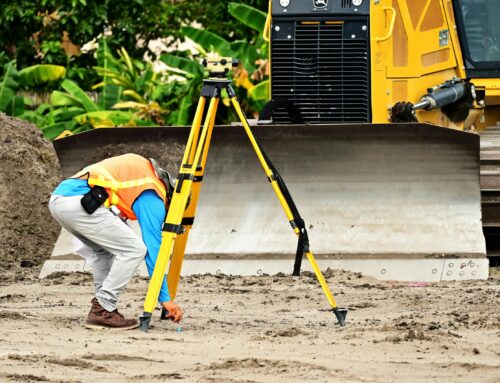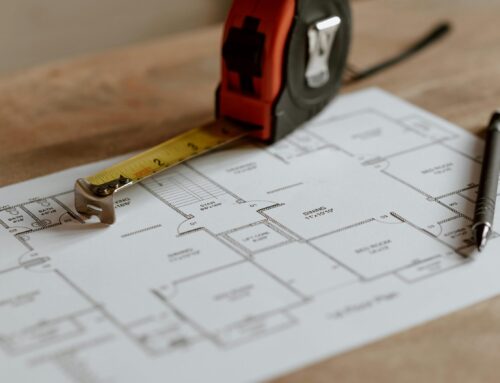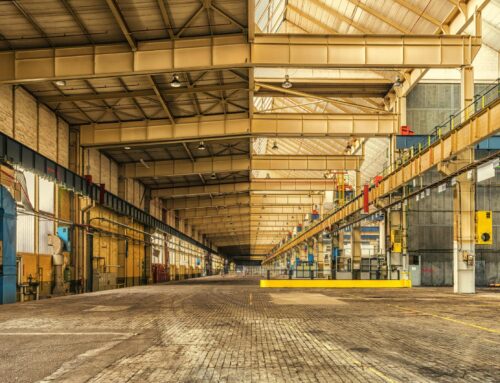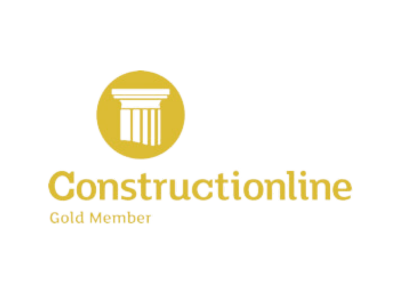We’ll cover:
What is the Commercial Side of Construction?
The process of designing, planning, and constructing structures for business purposes. These structures, which can be sold or leased in the private sector, encompass a wide variety of buildings such as offices, manufacturing plants, medical centres, and retail shopping centres.
Unlike residential construction, which focuses on creating living spaces for individuals or families, commercial construction is tailored to meet the needs of businesses. It can involve anything from constructing a small retail store to a sprawling corporate office building. The primary objective of construction, when it comes to anything commercial, is to create a space that is functional, safe, and aesthetically pleasing, meeting the specific requirements of a business.
These construction projects necessitate a team of professionals, including architects, engineers, and contractors, to ensure the project is completed on time, within budget, and in compliance with all relevant regulations and standards. The complexity of these projects often requires extensive planning and coordination, making communication a key aspect of a successful construction project.
The Three Scales of Construction
Construction projects can be broadly categorised into three scales: small-scale, medium-scale, and large-scale. Each scale has its own unique characteristics, challenges, and requirements. Let’s delve into each one:
- Small-Scale – Small-scale construction in a commercial sense typically involves projects that focus on rebranding or changing the look of a structure through interior renovations. This could include remodelling a retail store, renovating an office space, or upgrading a restaurant. These projects may be smaller in scope, but they require a keen eye for detail and a deep understanding of the client’s vision to transform existing spaces into something new and exciting.
- Medium-Scale – Medium-scale construction projects often involve the renovation, expansion, or restructuring of existing buildings. This could include adding an extension to a commercial property, renovating a shopping mall, or transforming a warehouse into a modern office space. These projects require a balance of maintaining the integrity of the existing structure while making significant changes to meet new requirements.
- Large-Scale – Large-scale projects are complex undertakings that often involve constructing buildings from the ground up. These could include high-rise office buildings, manufacturing plants, medical centres, or large retail shopping centres. These projects require extensive planning, a large team of professionals, and significant resources. They also often involve navigating complex regulations and standards to ensure the final structure is safe, functional, and meets the needs of the client.
Each scale of commercial construction presents its own unique challenges and opportunities. At Pure Construction, we have the expertise and experience to handle construction projects of all sizes, ensuring a successful outcome every time.
The Construction Process
The construction process is a complex, multi-stage endeavour that requires careful planning, coordination, and execution. Here’s a step-by-step overview of what this process typically involves:
- Development – The development stage is where the project begins. This involves determining the client’s needs, establishing the project’s goals, and securing the initial budget. During this stage, the project’s feasibility is assessed, the site is selected and evaluated, and preliminary designs are created. This stage is crucial for setting the foundation for the rest of the project.
- Design – Once the development stage is complete, the project moves into the design phase. This involves creating detailed drawings and models to show clients how the structure will look. The design phase allows clients to visualise the final product and make any necessary changes before construction begins. This stage often involves architects, engineers, and other design professionals.
- Construction – The construction phase is where the project comes to life. This involves scheduling workers, procuring materials, and managing the construction site. During this stage, the project must be kept on schedule and within budget, while accommodating any necessary changes or adjustments. This phase requires strong project management skills and a keen eye for detail.
- Finished Product – Once construction is complete, the project enters the final stage. This involves walking through the completed project with the client to confirm satisfaction before finalising logistics and officially completing the project. This stage ensures that the final product meets the client’s expectations and that all project requirements have been met.
The commercial construction process is a complex journey, but with the right team of professionals, it can be a smooth and rewarding experience. At Pure Construction, we pride ourselves on our ability to manage this process effectively, delivering high-quality results on time and within budget.
The Importance of Communication
In the realm of construction, effective communication is not just beneficial—it’s essential. From the initial planning stages to the final walk-through, clear and consistent communication ensures that everyone involved in a project understands their roles, responsibilities, and the overall project goals.
Communication is the bridge between the client’s vision and the tangible structure that is ultimately built. It allows for the exchange of ideas, the resolution of issues, and the establishment of a shared understanding of what the project entails. Here’s why communication is so crucial in commercial construction:
- Understanding Client Needs: Clear communication allows the construction team to fully understand the client’s needs and expectations. This understanding forms the basis of the project’s goals and guides every decision made throughout the construction process.
- Coordination Among Teams: Construction projects involve various professionals, including architects, engineers, contractors, and subcontractors. Effective communication ensures that everyone is on the same page, reducing the likelihood of errors and misunderstandings.
- Project Updates: Regular communication keeps the client informed about the project’s progress. This includes updates on the construction timeline, any challenges encountered, and how those challenges are being addressed.
- Change Management: Changes are often necessary during construction projects. Clear communication ensures that any changes are understood, agreed upon, and implemented effectively.
- Problem-Solving: Issues are inevitable in any construction project. Effective communication allows for swift problem identification and resolution, preventing small issues from becoming major problems.
At Pure Construction, we place a high value on communication. We believe that it’s the key to successful construction projects, ensuring that our clients’ visions are met and that the final product is something we can all be proud of.
Commercial vs. Domestic Construction
While both commercial and domestic construction involve the creation of new structures or the renovation of existing ones, there are several key differences between the two. Understanding these differences can help clarify the unique challenges and considerations of construction projects.
- Scale and Complexity: Commercial projects are often larger and more complex than domestic ones. They may involve the construction of high-rise buildings, shopping centres, or industrial facilities, which require a higher level of planning and coordination. Additionally, commercial projects often have stricter regulations and standards that must be met.
- Design Considerations: The design of commercial buildings often needs to accommodate a variety of functions and a larger number of occupants. This can involve considerations around accessibility, public safety, and the efficient use of space. In contrast, domestic construction is typically focused on creating comfortable living spaces for individuals or families.
- Materials and Techniques: Commercial projects often use different materials and construction techniques compared to domestic construction. For example, commercial buildings may require steel framing or specialised industrial equipment.
- Project Timeline: Commercial projects often have a faster timeline than domestic ones. This is due to the financial implications of delays in commercial projects, which can be significant.
- Stakeholders: In commercial construction, the number of stakeholders involved in a project is usually larger. This can include investors, property managers, future tenants, and more. In contrast, domestic construction typically involves fewer stakeholders, often just the homeowner and the construction team.
At Pure Construction, we specialise in construction, navigating the unique challenges and complexities of these projects with expertise and professionalism. Whether it’s a small-scale renovation or a large-scale new build, we deliver high-quality results that meet our clients’ business needs.
Industrial and Residential vs. Commercial Construction
Commercial, industrial, and residential are the three main sectors of the construction industry, each with its own unique characteristics and requirements. Here’s how commercial projects compare to the other two:
- Commercial vs. Industrial Construction – While the commercial side focuses on buildings for business purposes, such as offices, retail stores, and restaurants, industrial construction is concerned with structures for industrial operations. These can include factories, power plants, and warehouses. Industrial construction projects often have specific requirements related to the industry they serve, such as heavy-duty flooring for manufacturing facilities or special ventilation systems for chemical plants.
- Commercial vs. Residential Construction – Residential construction involves the creation of living spaces for individuals or families, such as houses, apartments, and condominiums. These projects often focus on comfort, aesthetics, and personalisation. In contrast, commercial construction is geared towards business needs and must accommodate a variety of functions and a larger number of occupants. Commercial buildings also often have stricter regulations and standards related to safety and accessibility.
While there are clear differences between commercial, industrial, and residential construction, there are also many similarities. All three sectors require careful planning, coordination, and execution to ensure successful project completion. At Pure Construction, our expertise in commercial construction allows us to navigate the unique challenges of these projects and deliver high-quality results.
Read More
Pure Construction’s commitment to excellence and transparency is further showcased through their extensive collection of blogs. These articles not only highlight their expertise but also serve as a valuable resource for clients and industry enthusiasts alike. Here are some notable mentions:
Setting the Gold Standard for Construction Firms in Portsmouth: Take a look at why Pure Construction is considered one of the best in the business right here.
Crafting Excellence in Woodwork: Dive into the world of specialist joinery with Pure Construction. This blog offers a detailed look into the craftsmanship and precision that goes into creating bespoke wooden structures.
Setting Standards for Commercial Decorating: Commercial decorating is more than just aesthetics; it’s about creating a conducive environment for businesses to thrive. Discover how Pure Construction is redefining standards in this domain.
A Tale of Fire Restoration in Portsmouth: Restoration projects come with their unique challenges. Read about Pure Construction’s journey in restoring the Roundhouse, a testament to their resilience and expertise.
Portsmouth Building Companies: Why Pure Construction Stands Out as the leader amongst other Portsmouth Building Companies
Building in Hampshire: Get a comprehensive overview of the construction landscape in Hampshire. This blog offers insights into the challenges and opportunities in the region.








